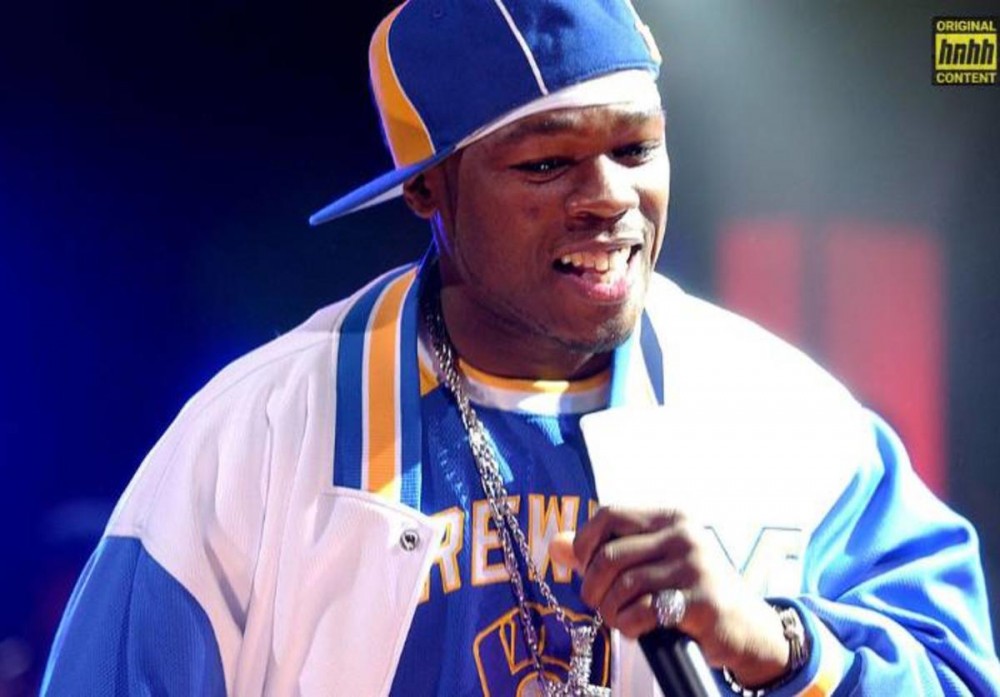The sophomore slump is a well-known trope. The idea that an artist can come out the gate swinging and succumb to the pressures surrounding a follow-up release. Many different factors can come into play. An increased budget might lead to stylistic detions. A lack preparation can result in haphazard songwriting. The list goes on, and many rappers have stood in the shadow cast by the legacy their own debut.
On February 6th, 2003, released his first album Get Rich Or Die Tryin under the watchful eye ’s Shady Records and ’s Aftermath Entertainment. The project earned instant acclaim and sold over twelve million copies in a single year. The rare combination quality music and universal appeal, a phenomenon not ten seen witnessed in the mainstream music scene. Yet such lty gains undoubtedly heightens the pressure. How does one improve on what may truly be a flawless album? For 50 Cent, The Massacre was his valiant attempt.
Released fifteen years ago to this day, Fif’s second album was met with much its predecessor’s commercial success — yet not nearly as much its critical acclaim. Looking back, it’s easy to understand why the media was taking a stricter stance against hip-hop’s seemingly unstoppable villain. Where Get Rich’s hits felt organic in their delivery — particularly the dark dancefloor banger “In Da Club” — The Massacre seemed like a factory for scientifically rendered singles. “Disco Inferno,” “Candy Shop,” and “Just A Lil Bit” were the project’s first three releases, leaving many wondering whether Fif was gearing up for a full-blown crossover. Remember that this was a man who made a name for himself through his blistering mixtape output – a rapper who all but obliterated over his sing-rap formula. Given that Get Rich was largely hailed a (then) modern-day gangsta-rap masterpiece, the slightest detion was enough to raise an eyebrow or two.

Chris Polk/FilmMagic/Getty s
Released in full a few weeks after “Candy Shop” dropped, The Massacre brought a slew new producers and trusted collaborators into the fold. Dr. Dre contributed a pair instrumentals (two down for his four on Get Rich). Eminem laced five. Scott Storch had three. Hi-Tek, J.R. Rotem, Sha Money XL, Needlz, and Buckwild rounded out the effort. The expanded roster led to a more eclectic sound, both a blessing and a curse with regards to cohesion. It seemed as if 50 Cent intended for everything to scale up to match his stardom. There’s an undeniable polish to The Massacre, a tonal shift from the minor-key heavy Get Rich. Understandable given his own meteoric rise, though songs like the brooding “I’m Supposed To Die Tonight” serve as welcome reminders his bleaker urges.
And yet despite pulling onto the scene with a glossier paint job, the same villain sat behind the wheel. “Piggy Bank” has since become immortalized as a 50 Cent classic, one the cockiest, arrogant, and delightfully obnoxious diss tracks all time. Not only was he firing shots at his old pal Ja Rule, but he opened the floodgates to include , , Shyne, Lil Kim, Kelis, and Nas. No longer was this an up-and-comer with dreams world domination, but a full-blown madman slamming his fist down on the big red button. It’s hard not to throw on “Piggy Bank” and be swept away in the narrative a simpler time, an era in which confrontation transpired on wax rather than social media stories and subtweets.

Peter Kramer/Getty s
Let the record state that despite its bloat, there are phenomenal songs littered across The Massacre. Introductory banger “In My Hood” picked up directly where Get Rich left f, capturing the depth Fif’s appeal without straying too far from his roots. Though not quite “Patiently Waiting,” Em and 50’s reunion special “GATman & Robbin” made for a compelling theme song, boasting a hypnotic flow scheme and one the hardest Batman flips rap has ever seen. “Get In My Car” might be one the smoothest instrumentals on the project, Fif’s unflinching bars reminding the masses that he’s not to be tried under any circumstances. The album’s last quarter tends to fly under the radar, but there’s plenty to unpack on songs like “God Gave Me Style” and the vintage-sounding “I Don’t Need Em.” And let’s not overlook Dr. Dre’s cartoonishly badass banger “Gunz Come Out,” which rolls in like a tank over a kingdom Playdoh castles.
Even an excellent effort can succumb to the sophomore slump. The shadow Get Rich is simply that powerful. Yet fifteen years removed from those damnable trappings expectation, it feels absolutely safe to call The Massacre a classic. Perhaps there’s nostalgia attached to that label; what it? There’s quality across the board, and Fif puts on a masterclass in hitting two major demographics without sacrificing artistic integrity in the process. It’s a testament to his songwriting longevity that “Candy Shop” and “Just A Lil Bit” are still welcome in rotation to this day. Not to mention the fact that it’s currently sitting at 6X platinum, its ascent to diamond status all but inevitable. Considering there are many young fans who likely know 50 as a television mogul first and rapper second, that’s a pretty incredible accomplishment. Not only did Curtis Jackson change the game back in 2005 — he massacred it with a smile on his face.
